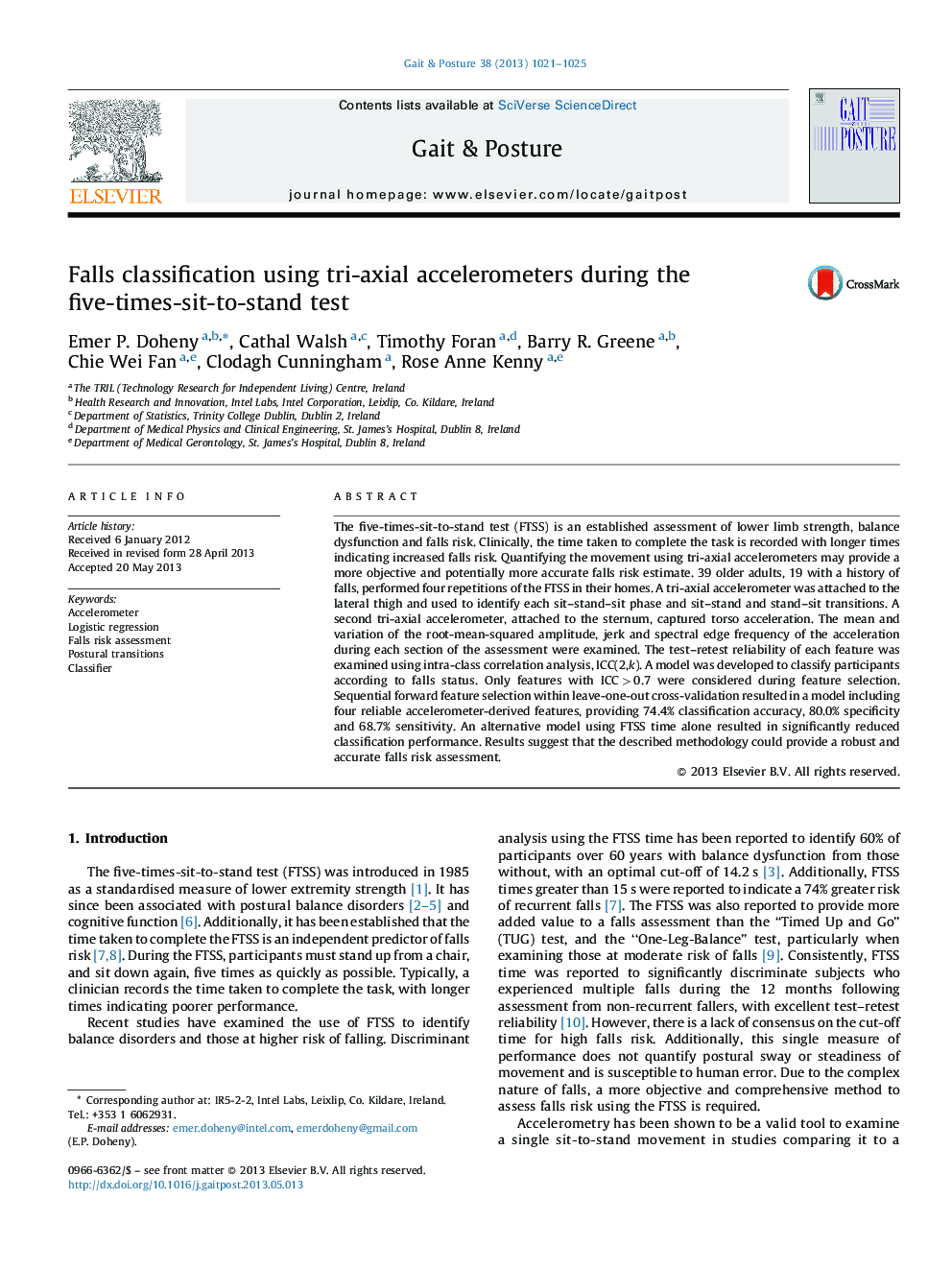| کد مقاله | کد نشریه | سال انتشار | مقاله انگلیسی | نسخه تمام متن |
|---|---|---|---|---|
| 6206840 | 1265652 | 2013 | 5 صفحه PDF | دانلود رایگان |
- Accelerometry may enhance the 5-times-sit-to-stand test (FTSS) as falls assessor.
- 39 older adults (19 fallers) performed 4 FTSS trials, using accelerometers.
- 46 statistically reliable accelerometer-derived FTSS features were identified.
- Model developed to classify falls status using reliable features, 74.4% accuracy.
- Superior cross-validated classification with accelerometry compared to FTSS time.
The five-times-sit-to-stand test (FTSS) is an established assessment of lower limb strength, balance dysfunction and falls risk. Clinically, the time taken to complete the task is recorded with longer times indicating increased falls risk. Quantifying the movement using tri-axial accelerometers may provide a more objective and potentially more accurate falls risk estimate. 39 older adults, 19 with a history of falls, performed four repetitions of the FTSS in their homes. A tri-axial accelerometer was attached to the lateral thigh and used to identify each sit-stand-sit phase and sit-stand and stand-sit transitions. A second tri-axial accelerometer, attached to the sternum, captured torso acceleration. The mean and variation of the root-mean-squared amplitude, jerk and spectral edge frequency of the acceleration during each section of the assessment were examined. The test-retest reliability of each feature was examined using intra-class correlation analysis, ICC(2,k). A model was developed to classify participants according to falls status. Only features with ICCÂ >Â 0.7 were considered during feature selection. Sequential forward feature selection within leave-one-out cross-validation resulted in a model including four reliable accelerometer-derived features, providing 74.4% classification accuracy, 80.0% specificity and 68.7% sensitivity. An alternative model using FTSS time alone resulted in significantly reduced classification performance. Results suggest that the described methodology could provide a robust and accurate falls risk assessment.
Journal: Gait & Posture - Volume 38, Issue 4, September 2013, Pages 1021-1025
